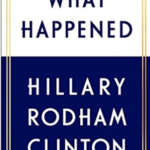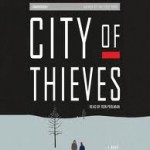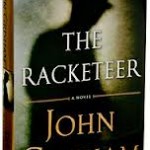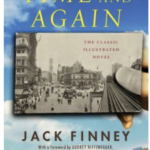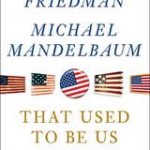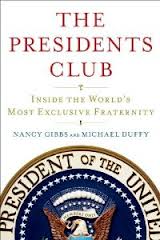Search results for ‘This is where I leave you’
Moving Images: Psychoanalytic Reflections of Film by Andrea Sabbadini
June 10th, 2016 — 04:12 pmThe following is a book review which I wrote and appeared in Psychodynamic Psychiatry Volume 41 Number 3 Fall 2016 p 162-166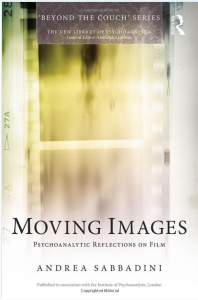
Moving Images: Psychoanalytic Reflections of Film, by Andrea Sabbadini, Routledge, London and New York, 2014, 140 pp.
While reading this book, I kept pondering the question of who would be the best audience for it. The author, Andrea Sabbadini, is a psychoanalyst who is extremely knowledgeable about film, especially classic European movies. His stated goal for the book is to offer discussion of films from a psychoanalytic perspective and in the process of doing so, to use the films in order to illustrate a number of psychoanalytic ideas and to convey a sense of what analytic work consists. Anyone who is familiar with many of the movies discussed in this book and understands psychoanalytic and psychodynamic theory would be the ideal audience for it. However, even knowledgeable psychoanalysts with out having seen these films would find it difficult to relate to the book. Similarly, students of cinema who may have seen the films mentioned, would probably get lost in the erudite psychoanalytic discussion presented in this book. Unfortunately, that would seem to leave a very small audience for this book. However, I do see an important value for it which I will discuss at the conclusion of this review.
This 140-page soft-covered book has six chapters which I will list below with two of the several movies discussed in each chapter.
Chapter 1: “A Young Profession: Films on Psychoanalysis” Spellbound (Hitchcock, 1945)
Il Postino (Radford, 1994)
Chapter 2: “…and the Oldest One: Films on Prostitution” Nights of Cabiria (Fellini, 1957)
Belle de Jour (Buñuel, 1967)
Chapter 3: “The Young Ones: Films on Children” The Spirit of the Beehive (Erice, 1973)
German Year Zero (Rossellini, 1948)
Chapter 4: “…and Slightly Older Ones: Films on Adolescents” Heavenly Creatures (Jackson, 1994)
City of God (Meirelles, 2002)
Chapter 5: “Between Eros and Thanatos: Films on Love” A Pornographic Affair (Fonteyne, 1999)
Amores Perros (Inarritu, 2000)
Chapter 6: “Watching Voyeurs: Films on Scopophilia” Rear Window (Hitchcock, 1954)
Peeping Tom (Powell, 1960)
The book opens with a discussion of films about psychoanalysis in which the author touches on how the psychoanalytic profession has been depicted in numerous movies, including a mention of the television series In Treatment (2010). There are several flms discussed in this chapter where Freud himself, and other well known analysts, were depicted. We also learned that Freud showed very little interest in the movies of his day and stated in a letter that he did not believe psychoanalytic ideas could be represented by cinema. Alfred Hitchcock’s Spellbound, which starred Gregory Peck and Ingrid Bergman, is described in this chapter as perhaps the most famous of all films about psychoanalysis. Sabbadini spends five pages discussing this film and how this whodunit movie included discussion of dream analysis, anxiety inducing situations, psychopathic devices of amnesia (repression), and guilt complexes. There is also a discussion of how the camera work, light effects, sound track, and editing create the dream-like psychological atmosphere that the director wished to achieve. In the movie Il Postino, Sabbadini justifies that while it is not actively about the psychoanalyst or analysand, the close relationships that gradually develop between Marino, the postman, and Neruda, the poet, shared many features with what normally takes place in our psychoanalytic consulting rooms.
In the chapter about films and prostitution, the author reviews the social complexities surrounding the selling and buying of sexual favors for money. He even considers a common fantasy that there is a close association between prostitution and psychoanalysis. He uses Fellini’s movie, Nights of Cabiria, to discuss the concept of a rescue fantasy. Fetishism and masochism are also analyzed in this chapter in some detail. Catherine Deneuve’s character Severine in Belle de Jour is examined and at one point the author even postulates that the house of prostitution is the metaphoric antithesis of marriage and has the unconscious function of keeping the latter alive and with it the normality it symbolizes.
Chapter three is the longest chapter and discussed fillms about children, which should not be surprising coming from a psychoanalyst who appreciates the importance of early life experiences. The Spirit of the Beehive was an internationally acclaimed film which was described as dealing with innocence, illusions, and isolation. It focuses on two young girls growing up in the Spanish countryside. This movie deals with the fantasy that they have of monsters which occurs after they see the classic horror movie Frankenstein. This certainly can be related to contemporary young women who are constantly bombarded with such horror films. The author examines how the two children’s fantasy world and magical thinking is skillfully explored by this movie movie. The film Germany Year Zero approaches children in a completely different manner. Rosselini visited postwar Germany in 1947 apparently without any story to tell but trying to answer his own troubled question, “The Germans were human beings like everyone else. What could have led them to this disaster?” Sabbadini describes how this film develops the answer to this question from the point of view of children as they find themselves forced by circumstances to behave like adults.
It is only natural that the author progresses to the next chapter and discusses films on adolescents. He tries to put a perspective on child development theory by noting that it is only in the course of the last 30 or so years that a radical shift has taken place in relation to our understanding of adolescence. One of the films which he focuses on in this chapter is Heavenly Creatures where two adolescent girls, when not immersed in their fantasies, would become obsessed with a plan to murder the mother of one of them. This movie is actually based on the diaries of a person in a real life event which took place in New Zealand. Sabbadini describes how the film attempts to show the conflict between adults and adolescent children. The Oedipus complex and “passing phases of homosexuality” are some of the themes analyzed in this movie. Another film discussed in this chapter is City of God which is also based on an actual event that happened in Rio de Janeiro in the 1960s and 1970s. It looks at the role of young people in the Brazilian slums and is described as a “part tender Coming of Age film and part Gang-Warfare Epic.” The author uses this film to further expound on Oedipus theory.
Chapter 5 tries to look how the cinema often tackles issues of love. The author notes how films have explored most variations of this theme often throwing new light on the more bizarre and unusual aspects of it rarely considered anywhere else. He also states that psychoanalysis has done likewise focusing more often on the pathological deviant or perverse side of it rather than the so-called normal one. Sabbadini uses A Pornographic Affair and the relationships of the two characters Elle and Lui to study the deeper emotional meaning of their liaison. He discusses psychoanalytic constructs to understand them such as triangular constellations, regressive tendencies, voyeuristic fantasies (of the audience), and the unseen pornographic components of the main characters’ love affair. Sabbadini returns to the concept of the rescue fantasy as he then analyzes the Mexican film, Amores Perros. This movie consists of three stories which he tells us involve transgressive passion and almost intolerable violence as well as profound humanity. He breaks down each story and explains and interprets the fantasies involved. He explains how he feels that there is a universal fantasy and an important emotional complex both in the conscious and unconscious and that it is often related to primary narcissism.
In the final chapter titled “Watching Voyeurs, Films on Scopophilia” perhaps the most interesting chapter in the book. Sabbadini recognizes the cinema goer or film lover as a voyeur and he quotes Freud stating that the scopophilia drive is autoerotic. Therefore the movie-going experience is a source of both voyeurism and exhibitionism. By bringing the viewers into the equation, he is in a sense recognizing one of the analyst’s most powerful instruments and that is a recognition and utilization of our countertransference. One of the examples that he uses is Hitchcock’s Rear Window. In this film, through one of the main characters played by James Stewart, we watch through his rear window, what goes on in an apartment house opposite his home. Sabbadini discusses that what we see through the voyeur’s eye is a projection of our own desires. He also describes this movie as a dream. He goes on to use Freud’s essays on the theory of sexuality to analyze the movie and also brings in the witch hunts of the McCarthy era which were occurring when the film was made and he believed may have influenced it. There is no shortage of films for Sabbadini to use to further explore this topic. He analyzes the film Peeping Tom which allows him to discuss an array of different forms of deviant sexuality, psychopathology, scopophilia, obsessions with pornography, and sadism, not to mention a further description of the presence of a deep depression underlying everything else.
I believe that the real value of this book will be as a textbook for the study of the cinema from a psychoanalytic point of view. A group of psychoanalytically minded people could choose one of the films mentioned in this book for each group discussion and view it individually or together prior to a discussion of it. They could consider the observations and the thoughts of Sabbadini as well as their own reactions and interpretations of the film viewed. One person could lead the discussion of each film. Since most members of such a group would likely not have previously seen most of these films, this would enable them to now view them and participate in a study of them. I am sure these films are readily available on Netflix.
A second group that may want to use this book as a guide to understanding the films discussed in it might be film students or people who enjoy classic films. Assuming that most of these people who join such a discussion group would not be psychoanalytically trained, the leader or guide for such a discussion group could be a psychoanalyst who is skilled at explaining these concepts as they apply to this film, to a lay audience. The students in such a class would already have a keen interest in how movies convey psychological issues and would value seeing this film again (or for the first time) and would most likely be very receptive to having the meaning put in a psychodynamic and psychoanalytic context. Once again this book would be a marvelous textbook for the leader and the group to use after they have seen the film under discussion.
To obtain a copy of this book from Amazon, click here
A Common Struggle: A personal Journey through the Past and Future Mental Illness and Addiction by Patrick J. Kennedy and Stephen Fried
December 9th, 2015 — 11:56 pm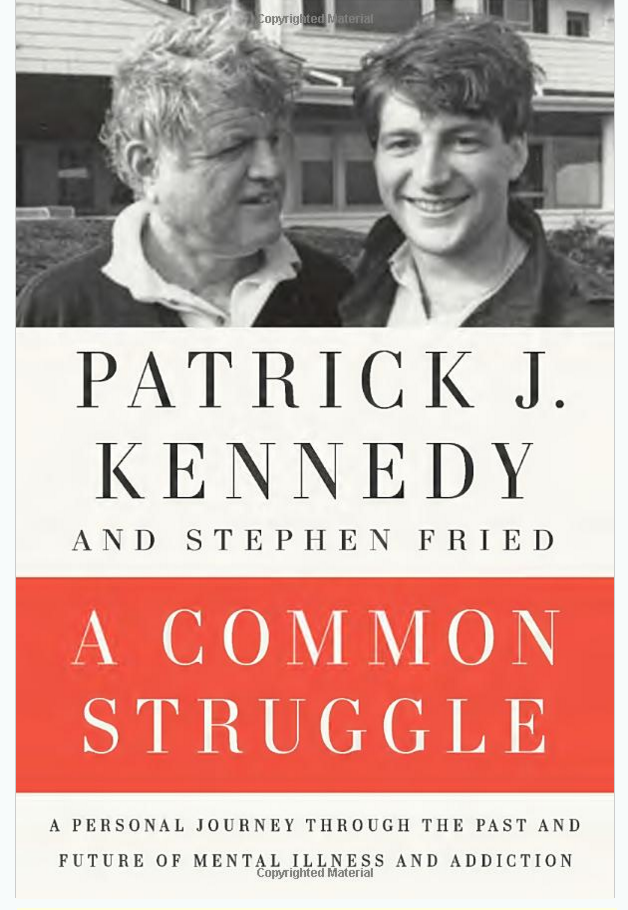 A Common Struggle: A personal Journey through the Past and Future Mental Illness and Addiction By: Patrick J. Kennedy and Stephen Fried
A Common Struggle: A personal Journey through the Past and Future Mental Illness and Addiction By: Patrick J. Kennedy and Stephen Fried
This is a story, told in the first person of Patrick J. Kennedy. It is really two stories presented to us simultaneously. It is about Patrick Kennedy, son of Edward Kennedy and nephew of JFK and Bobby Kennedy. He has been a US congressman from Rhode Island for eight terms and was one of the staunch advocates for parity legislation, for mental illness, and addiction. Yet at the same time that he was leading the fight in the United States Congress to bring about these major changes in our healthcare system, he himself was secretly battling mental illness and addiction.
An important part of his personal story was a discussion of alcoholism in his family. Not only was the author an alcoholic but his brother, mother, and father, Ted Kennedy also struggled with this condition. It is significant that all of them except his father ultimately recognized their problem and entered various programs to help themselves. His mother battled alcoholism for a prolonged period of time and yet her condition was not recognized by family members despite the fact that they knew about several hospitalizations and treatment programs that she had undergone.
One of the most revealing insights about his father that he revealed in this book is how Ted Kennedy was traumatized by the tragic death of his three brothers, JFK, Bobby Kennedy, and his oldest brother, Joe Jr., who was killed in World War II. An additional major trauma for Ted Kennedy was the death of the young woman in Chappaquiddick, an incident well covered by the press.
It was not a simple pathway for the author to recognize his own problems. Even after a period of therapy with Psychiatrist Peter Kramer, author of the well known book (Listening to Prozac). Kennedy felt this treatment was helpful but did not eliminate his addiction problem or allow full acceptance of his bipolar condition. He vividly described how he would convince himself that he didn’t have any problems if he didn’t drink in public or take “illegal” drugs.
Patrick Kennedy served in the Rhode Island legislature and was elected as the youngest member of the US Congress in 2004 during a period that his addiction and mental illness was hidden from the public. It was also pretty much hidden from himself.
His colleagues in the US Congress ultimately became aware of his attempts to hide his drinking problem. Kennedy describes an important event for him when in 1996, Minority Leader, Dick Gephardt, offered him the prestigious chairmanship of the Congressional Campaign Committee on the condition that he stop drinking. This made him realize how he was denying that he had a problem that was known to others.
It wasn’t until 2005 that he publicly admitted that he was suffering from a mood disorder that was being treated by a psychiatrist. While his own struggle continued, he became more effective in his advocacy in the US Congress. One misconception he believed had to be clarified concerned Nancy Reagan’s “Just Say No” campaign against drugs. He felt that this missed the main point that addiction is not something you can simply say no to, just as you can’t say no to cancer. It is a disease and by implying you can just say no stigmatized people who have the genetic propensity to have this disease.
As much as the story of Kennedy’s recognition of his own illness of addiction and mental disease and how he battled it is quite enlightening, the battle for a definitive bill in the US Congress is just as revealing.The events leading up to the 2008 Wellstone and Domenici Mental Health Parity and Addiction Equity Act are quite interesting and complicated. They are also quite personal to Patrick Kennedy. It took place at the time that he was relapsing to alcohol and painkillers and also was having an exacerbation of his bipolar condition. While Patrick Kennedy was one of the leading champions in the House of Representatives for this legislation, his father, Ted Kennedy, was a major supporter of this bill in the US Senate. This was also at a time that the senior Kennedy was dying of a brain tumor. Compromises had to be made in the bill and the Senate was reluctant for the legislation to be as comprehensive in various aspects and details of the bill as was wanted by the House of Representatives. There also was a question how the legislation would deal with the new surge of mental health problems occurring in soldiers returning from the war. There was a concern that it should cover PTSD as well as addiction in the returning servicemen. Patrick Kennedy described the dramatic moment that his dying father came to the senate floor to vote for the final version of the bill to the applause of the US Senate.
Even with the passage of this extraordinary legislation, the battle for adequate parity for healthcare support was far from over. The proof and the success of this landmark bill would depend on the implementation by the federal and state governments and certain local rulings are expected to eventually reach the Supreme Court. The 2016 presidential race can certainly also be expected to impact the success of implementation of this legislation. As of this writing, it appears that the Republican candidates may be reluctant to support the implementation of this legislation and provide funding for new programs.
Patrick Kennedy decided to leave the United States Congress in 2010. Since departing from Congress, he has continued to be a leading advocate to bring about implementation of the 2008 legislation for mental illness and addiction. In this regard, among many other things, he has worked with two important organizations in which he plays very active roles. The Kennedy Forum (kennedyforum.org) gathers experts in mental health and addiction and holds important conferences that they hope will ensure implementation of the 2008 legislation. They are also committed to promoting a translation of neuroscience into the preventative and treatment interventions for mental health and addiction. The second organization in which Patrick Kennedy is involved is One Mind (onemind.org), which is dedicated to the promotion and support of “brain health” and creating a fast track for treatment. Their current focus is on new approaches to treat and cure PTSD but they look forward to applying solutions for all brain disease including depression, Parkinsons, ALS, dementia, Alzheimer’s disease, and addictions.
Patrick Kennedy does not bemoan problems. He is clearly a man not only with a vision but with plans and solutions. He concluded his book with a scorecard of how we should rate our public officials who have the opportunity to pass legislation and make changes. Also at the end of the book, he had a section for people who are dealing with their own mental illness and addiction. He tells them not to be alone in this struggle and how important it is to get treatment. Finally, sandwiched in this book was a series of photographs of many well known members of his family. It brought back many memories to this reader of the great accomplishments of many members of the Kennedy family and of the tragic events that they experienced.
It should be noted that at the time that Patrick Kennedy wrote this book, he was three and a half years sober. He has shown that he is a very accomplished and insightful man. I believe we are going to hear a great deal about him in his advocacy. He has provided in this book a valuable historical account of the reasons to fight for the proper care of mental illness and addiction. I am sure he has a bright future and many people will benefit by his skills and his passion.
Comment » | AM - Autobiography or Memoir, MHP - Mental Health/Psychiatry, P - Political
Season Of The Witch by David Talbot
June 23rd, 2015 — 04:41 pmSEASON OF THE WITCH BY DAVID TALBOT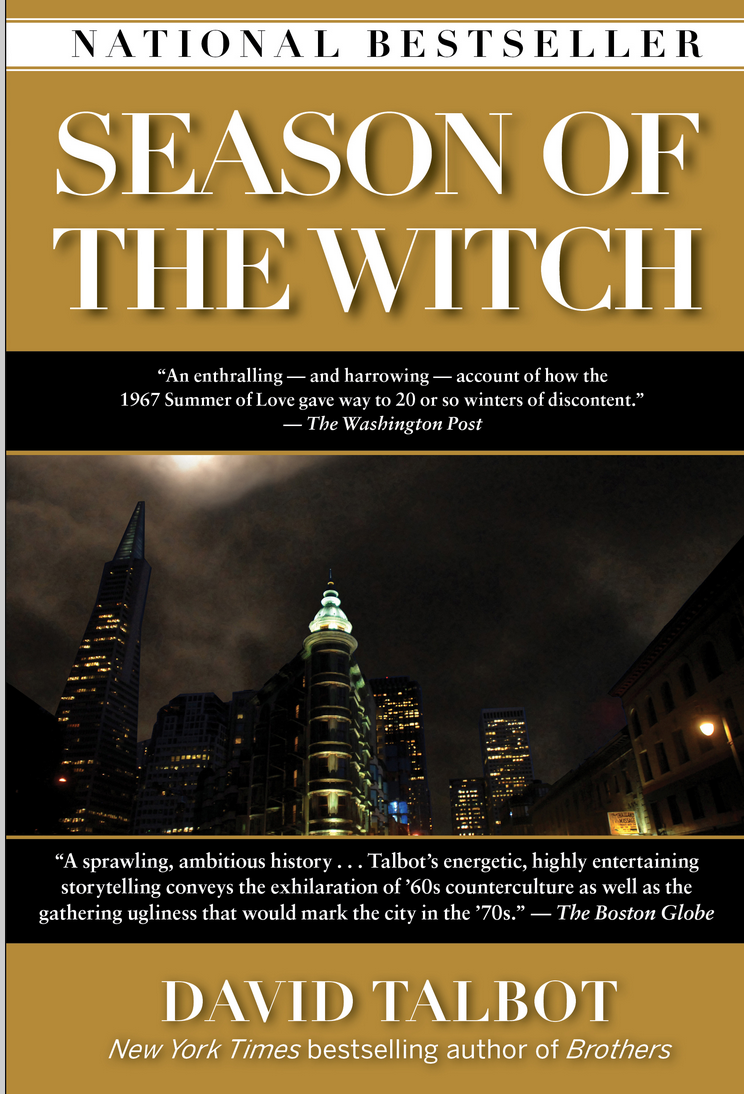
If you have ever lived in San Francisco (as I did for one year in 1965) or perhaps visited the city and have fallen under its magical spell then this book is for you. This is especially true if your connection occurred between the 20-year period of 1965 to 1985. This may also apply if you identify with the social movements or news events that originated or were closely connected to The City by the Bay.
Here is a partial list of the fascinating people, places and events that were described in great detail in this very interesting book:
Haight-Ashbury, giving birth to the Grateful Dead, Janis Joplin, The Human Be In, the Hippy Revolution, Summer Of Love.
Jerry Rubin, Abbie Hoffman, Timothy Leary, Runaway Children, Beatnik Society, Free Clinic, rock concerts, and Bill Graham.
San Francisco Chronicle, Herb Caen, Mobey Grape, Openly Gay Community, The Cockettes, Finnochios, STD, LSD, CIA, Susan Atkins, Charles Manson, Sharon Tate, Hell’s Angels, Rolling Stones, and Mick Jagger.
Joseph L. Alioto, Good Earth, Vincent Hallinan, SLA (Symbinese Liberation Army), Cinque, Bill Harris, Patty Hearst, Zebra Murders, Zodiac Serial Killer, Asian Law Caucus. Margo St. James, Hookers Liberation, Lenny Bruce, Ken Kesey.
George Moscone, Harvey Milk, Dianne Feinstein, Willie Brown, People’s Temple, Jim Jones, Jonestown, Guyana, Dan White , assassinations at City Hall, Edward DeBartolo, Joe Montana, Bill Walsh, HIV and the AIDS epidemic.
Although this book leaves at the end of the AIDS epidemic, we know this is just 20 years of a small but important part of the history of this great city. David Talbot, in my opinion, has earned the title of Story Teller Supreme for San Francisco. He told it like it was and what a story it has been and continues to be.
At the conclusion of this book, we are also treated to a section with photographs of some of the important players in the history of this great city that were described. These photos and the narration that accompanies, each one of them are a special dessert to the great meal this book has been.
Flash Boys by Michael Lewis
April 6th, 2014 — 10:03 pm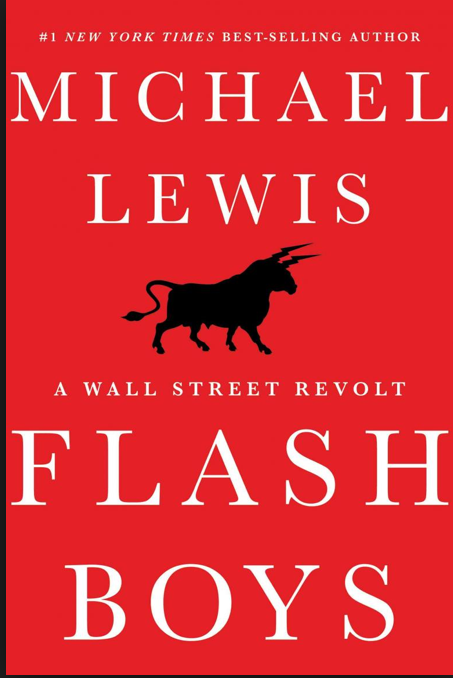 Flash Boys by Michael Lewis- This book is causing both great interest and high emotion on Wall Street since its recent release. The author, Michael Lewis, has great credentials as a reliable reporter, which he has demonstrated in several important books including best sellers Moneyball and Liar’s Poker. This book mesmerized me but to be perfectly honest, most of the time I did not understand what the author was talking about especially when he was explaining the exact details of how electronic trading really works. Apparently, according to the author, most of the traders on Wall Street also really don’t know what goes on behind the computer screen. However, that is exactly what this book is all about.
Flash Boys by Michael Lewis- This book is causing both great interest and high emotion on Wall Street since its recent release. The author, Michael Lewis, has great credentials as a reliable reporter, which he has demonstrated in several important books including best sellers Moneyball and Liar’s Poker. This book mesmerized me but to be perfectly honest, most of the time I did not understand what the author was talking about especially when he was explaining the exact details of how electronic trading really works. Apparently, according to the author, most of the traders on Wall Street also really don’t know what goes on behind the computer screen. However, that is exactly what this book is all about.
Early in the book the reader learns that millions of dollars are being spent to lay a black tube filled with fiberglass cable from Chicago to New Jersey and to make it as straight as possible. This will allow electronic signals that carry information between brokerage houses and the various stock exchanges to flow as fast as possible. One of the goals of this project is to let the people who sign up to use it be faster than all the other guys who don’t use it. However, that is not the whole story. We also learn that some brokerage firms spend lots of money to move their computer servers closer to the main stock exchange buildings in New York and New Jersey in order to shorten the travel time of the electronic messages. We are talking about increasing their speed by thousandths of a second, faster than the blink of an eye. With or without new cable there are all sorts or tricks or techniques to manipulate the speed and timing of the electronic impulses, which convey information involved in buying and selling stock. Certainly, speed really counts but things are even more complicated. Stock traders who do a lot of trades called High Frequency Traders (HFT) have special computer programs that have tricky computer maneuvers. For example, if they have a 10,000-share order they will send out a signal for an order of 100 shares. This allows the computer to figure out the current selling price and then the computer in blinding fast speed sends the rest of the order to various other exchanges and ends up making purchases a fraction of a cent better than if they didn’t have this super speed ability. It gets even more complicated as there are all sorts of commissions and bonuses per share that depend where and when the sale is made. Oh, also there are “dark pools” which are locations in cyberspace where various brokerage firms will make trades from their own clients without routing orders to the various exchanges. This saves money but doesn’t necessarily get the best price for the customers. There are 13 public stock exchanges (NY Stock Exchange, American Stock Exchange, NASDEQ and 10 more) plus 45 dark pools.
If this were just a book about computer programing and the ins and outs of the market, I would have given up on it early on. There also is a human side of this story, which is about some of the so called computer geeks that work designing these systems and making them work, as well as some of the higher ups who run the various brokerage and stock exchanges. It should be noted that many of these people earn hundreds of thousands of dollars per year and some make a few million dollars per year and those at the very top make much more. There are some heroes in this book. One in particular will be mentioned. His name is Brad Katsayama. He and a few colleagues figured out that super speed trading gives certain brokers an unfair advantage. Initially they designed a program to make the information from a trade arrive evenly at the same speed. (Needless to say this is a simplified explanation). They believed that this made for fairer business transactions. Then after many machinations they brought together a team that was dedicated to build their own stock exchange. The purpose would be to run super speed trading that would give no special advantage and no one would get special bonuses or commissions for tricky manipulations in how a block of stock was transacted in their stock exchange, which is named IEX (Investors Exchange). There were some very exciting moments as they built the exchange and waited with baited breath on the opening day to see if it would work and attract what they believed would be fair minded traders. Spoiler Alert! Goldman Sacks led the way and ultimately other firms would follow and IEX became a successful endeavor.
Lest you think that Goldman sacks is presented as one of the heroes of this book, there is a very scary situation described in the book where a man
by the name of Sergey Aleynkove is harshly sentenced to 8 years in jail for “stealing” computer code from them. He was one of those geeks who appeared to be more interested in the intricacies of the electronic trading than getting around the laws and regulations. The explanation for what he did that was shown to us was that while at Goldman Sachs he sent himself emails of the code he was working on which he kept when he left the firm. Most of what he used was open code that meant that it was available to anyone for free on the Internet and the rest of it wasn’t really usable outside of Goldman Sacks. Nevertheless they pressed charges and he was convicted. We are led to believe this is about the paranoid atmosphere when the secret world of electronic trading is being exposed.
The impression that Michael Lewis leaves us with this book is that stock market trading is mostly rigged and there is manipulation, skimming and deception. While there has been a genuine growth from which most investors profit in the long run, the everyday details are dark and dirty. They are also very difficult to understand. They are embedded in the nano second impulses that flash back and forth in the hands of the people who run our financial markets.
5 Days at Memorial: Life and Death in a Storm Ravaged Hospital by Sheri Fink
October 10th, 2013 — 11:59 pm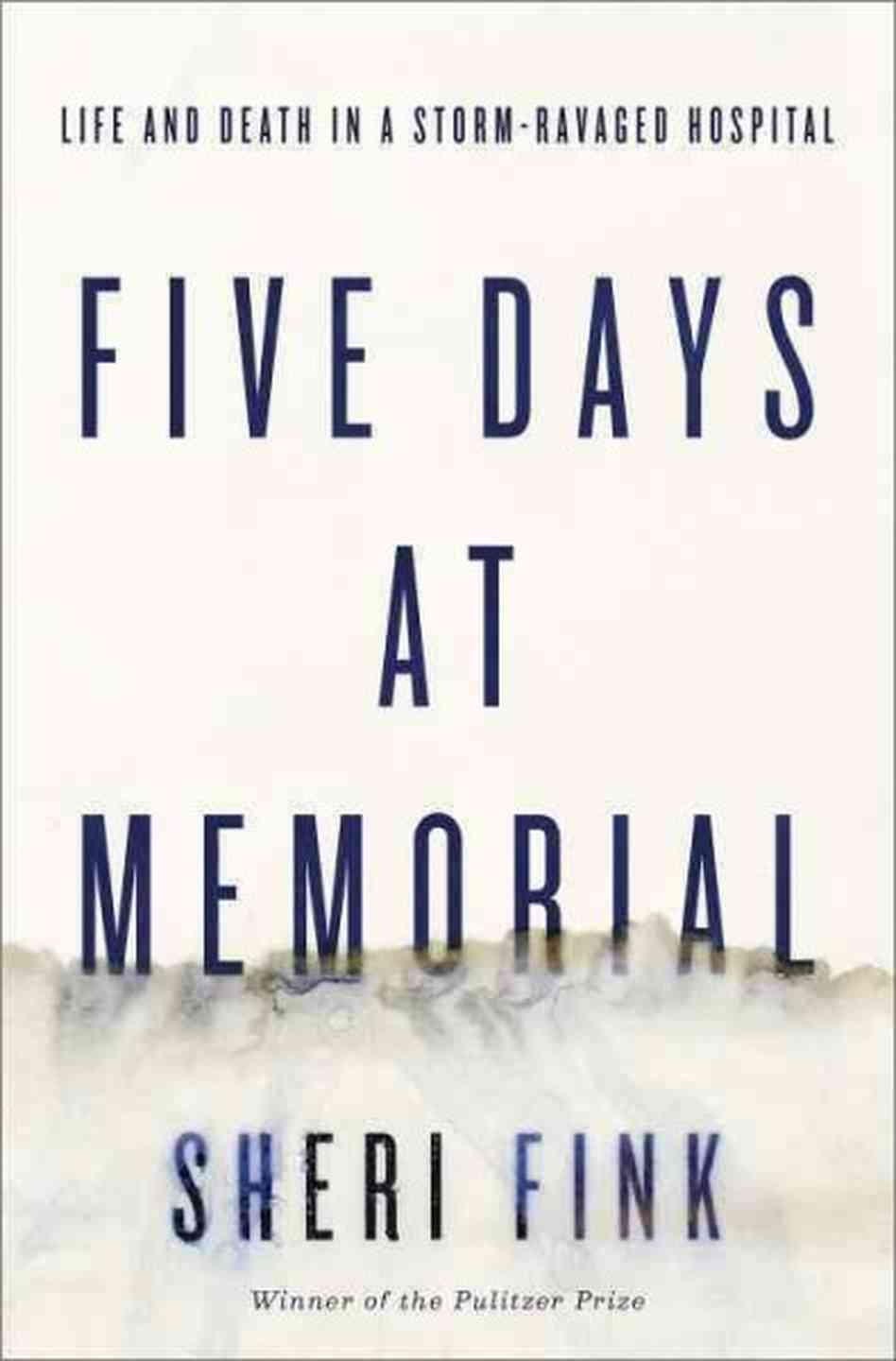 5 Days at Memorial: Life and Death in a Storm Ravaged Hospital by Sheri Fink – This is a great book for anyone who works in a hospital especially doctors and nurses who realize they could be on call when a disaster might strike. Also include yourself in this group if you are a hospital administrator or someone who likes to wrestle with ethical dilemmas. Be prepared for a lot of repetition, medical details that may all seem to be almost the same to most people as well as for some dips into the history of this hospital, other disasters and a course in ethics over the years even dating back to ancient times. If you can handle all of this, you really have an exciting, intellectually stimulating book with a look at disaster medicine, making medical and ethical decisions under difficult circumstances and some good legal battles. The main event was the 2005 Hurricane Katrina, which was the costliest natural disaster, as well as one of the five deadliest hurricanes in the history of the United States. At least 1,833 people died in the hurricane and subsequent floods. This book deals with the impact of the storm on Memorial Hospital in New Orleans, which was a 312-bed hospital, which included patients receiving intensive care and a larger section of the hospital where critically ill patients were treated. As the floodwater rose, most of the power in the hospital was irretrievably lost. There was no sanitation, and they were running out of food. Indoor temperatures were as high as 110 F degrees. At one point there were over 2000 people in the hospital as the numbers swelled with families of patients and staff as well as refugees from the surrounding city. The hospital became surrounded by water and there was no way to leave by car. A makeshift helipad was established on the roof but to get there patients, had to be carried up several flights of stairs usually in the dark and passed through a hole in the wall to get to another part of the hospital complex and up additional stairs. There was limited oxygen for these patients and for some the nurses had to squeeze a balloon like device to get the air into their lungs and drip an IV into their veins while going up the stairs. It was difficult getting enough helicopters to remove all the people from the hospital. Decisions had to be made which patients to evacuate first. Should it be the ones that were barely alive and wouldn’t be expected to even survive the trip to another location or perhaps already had a fatal illness where their demise was expected in a few days or should the patients go first who had a better long term outlook but still required hospital care?? Should the preference or order of care be influenced if the patient had a DNR order, meaning do not resuscitate the patient if their heart stops or if they stop breathing. As the first three or four days passed most of the people were evacuated (where they were evacuated to was another problem). There was confusion and questions about the actions by the corporation that owned the hospital and what arrangements they were making to help the stranded hospital’s need for evacuation. Outside the hospital gunshots were heard and there were concerns that looters might enter the hospital by boat. There was a concern about the physical integrity of the old hospital walls. You would think that the National Guard and the US Government should have done a heroic operation to save everyone from the beginning. They apparently were saving people from rooftops of their homes, helping out in the Superdome, which was the place of last resort for the people of New Orleans who weren’t able to escape before the flood, as well as sporadically appearing on the helicopter pad. In the end there were a small number of doctors and nurses trying to care for the remaining and sickest patients. There was concern that even moving some of them would be fatal. One man was so obese that they couldn’t figure out how to move him. Some patients were clearly in the last hours hours of their lives. Others would soon be that way if they didn’t get more intensive care. One of the remaining doctors along with two nurses was Dr. Anna Pous, a very compassionate and brilliant ENT surgeon who had a history of reconstructing patients with advanced cancer. She found herself faced with the task of trying to relieve the suffering of several remaining patients. It is well known to physicians and nurses who treat dying patients, that morphine often in combination with a rapid acting tranquillizer such as Versed, given intravenous will relieve the pain and agonizing difficulty breathing in the final stages of life. It is also known that this treatment could hasten their demise. Dr. Pous appeared to have made the decision to have several patients receive large doses of morphine and Versed, which would painlessly end their lives. At a later point in time , this action was felt by some people to be murder. In fact, Dr. Pous was actually arrested, handcuffed and was with two nurses charged with second-degree murder. The response of the medical community from this hospital and from across the country, the legal and emotional reactions of some of the patient’s families, the media hype and the ethical questions which were being asked, were an important part of this book. The book provides few answers and lots of stimulating questions. The author won a Pulitzer Prize for her reporting on this subject in the New York Times Magazine. If you are drawn to this subject you will not be disappointed.
5 Days at Memorial: Life and Death in a Storm Ravaged Hospital by Sheri Fink – This is a great book for anyone who works in a hospital especially doctors and nurses who realize they could be on call when a disaster might strike. Also include yourself in this group if you are a hospital administrator or someone who likes to wrestle with ethical dilemmas. Be prepared for a lot of repetition, medical details that may all seem to be almost the same to most people as well as for some dips into the history of this hospital, other disasters and a course in ethics over the years even dating back to ancient times. If you can handle all of this, you really have an exciting, intellectually stimulating book with a look at disaster medicine, making medical and ethical decisions under difficult circumstances and some good legal battles. The main event was the 2005 Hurricane Katrina, which was the costliest natural disaster, as well as one of the five deadliest hurricanes in the history of the United States. At least 1,833 people died in the hurricane and subsequent floods. This book deals with the impact of the storm on Memorial Hospital in New Orleans, which was a 312-bed hospital, which included patients receiving intensive care and a larger section of the hospital where critically ill patients were treated. As the floodwater rose, most of the power in the hospital was irretrievably lost. There was no sanitation, and they were running out of food. Indoor temperatures were as high as 110 F degrees. At one point there were over 2000 people in the hospital as the numbers swelled with families of patients and staff as well as refugees from the surrounding city. The hospital became surrounded by water and there was no way to leave by car. A makeshift helipad was established on the roof but to get there patients, had to be carried up several flights of stairs usually in the dark and passed through a hole in the wall to get to another part of the hospital complex and up additional stairs. There was limited oxygen for these patients and for some the nurses had to squeeze a balloon like device to get the air into their lungs and drip an IV into their veins while going up the stairs. It was difficult getting enough helicopters to remove all the people from the hospital. Decisions had to be made which patients to evacuate first. Should it be the ones that were barely alive and wouldn’t be expected to even survive the trip to another location or perhaps already had a fatal illness where their demise was expected in a few days or should the patients go first who had a better long term outlook but still required hospital care?? Should the preference or order of care be influenced if the patient had a DNR order, meaning do not resuscitate the patient if their heart stops or if they stop breathing. As the first three or four days passed most of the people were evacuated (where they were evacuated to was another problem). There was confusion and questions about the actions by the corporation that owned the hospital and what arrangements they were making to help the stranded hospital’s need for evacuation. Outside the hospital gunshots were heard and there were concerns that looters might enter the hospital by boat. There was a concern about the physical integrity of the old hospital walls. You would think that the National Guard and the US Government should have done a heroic operation to save everyone from the beginning. They apparently were saving people from rooftops of their homes, helping out in the Superdome, which was the place of last resort for the people of New Orleans who weren’t able to escape before the flood, as well as sporadically appearing on the helicopter pad. In the end there were a small number of doctors and nurses trying to care for the remaining and sickest patients. There was concern that even moving some of them would be fatal. One man was so obese that they couldn’t figure out how to move him. Some patients were clearly in the last hours hours of their lives. Others would soon be that way if they didn’t get more intensive care. One of the remaining doctors along with two nurses was Dr. Anna Pous, a very compassionate and brilliant ENT surgeon who had a history of reconstructing patients with advanced cancer. She found herself faced with the task of trying to relieve the suffering of several remaining patients. It is well known to physicians and nurses who treat dying patients, that morphine often in combination with a rapid acting tranquillizer such as Versed, given intravenous will relieve the pain and agonizing difficulty breathing in the final stages of life. It is also known that this treatment could hasten their demise. Dr. Pous appeared to have made the decision to have several patients receive large doses of morphine and Versed, which would painlessly end their lives. At a later point in time , this action was felt by some people to be murder. In fact, Dr. Pous was actually arrested, handcuffed and was with two nurses charged with second-degree murder. The response of the medical community from this hospital and from across the country, the legal and emotional reactions of some of the patient’s families, the media hype and the ethical questions which were being asked, were an important part of this book. The book provides few answers and lots of stimulating questions. The author won a Pulitzer Prize for her reporting on this subject in the New York Times Magazine. If you are drawn to this subject you will not be disappointed.
The Light Between Oceans by H.L. Stedman
September 27th, 2013 — 10:51 am The Light Between Oceans by H. L. Stedman – Tom Sherbourne is a young World War I veteran who takes an honorable job as a lighthouse keeper 100 miles off the coast of Australia. On leave in the mainland he meets and falls in love and marries Isabel who is very happy to join him in the lighthouse keepers home on an isolated island. Still early in the book, we learn of the all important incident where a small boat washes ashore with a dead man in it and a new born baby. By now Isabel has had three miscarriages and Tom and Isabel conclude the mother of the baby must have been lost at sea. They bury the man and keep and raise the baby as their own especially since it coincides with her latest expected but failed childbirth. As the story unfolds we learn much more about Tom and Isabel and about other people whose lives are related to this incident. We become drawn in to the complexities and deepest feeling of many of them. The author allows us to understand where the characters come from and where they are going . She puts us inside their heads as they struggle with their psychological pain and their decision-making processes. It is remarkable that included in this study of people is an insight into the baby girl who we meet shortly after her birth and watch her develop for the first five years of her life. The reader is drawn to the many interrelated characters in the book. To understand them is to empathize and like them. The book also gives the reader an insight into the impact of World War I on not only the participants and the returning young veterans but on the so many parents who never recover from what the war did to their families. But most of all this is a story about one big ethical dilemma that has the power to rip you apart if you put yourself in the shoes of all involved. This is a well-written novel which grabs you and makes you not want to put it down. When I finally did put it down after completing it I realize that it stirs up thoughts about a topic, which I have been thinking and writing about in recent months. That is the powerful desire of people to find their hidden roots and make personal contact with close relatives from whom they have been separated at an early stage in their lives or those related to them. ( See my blog on this subject ) . Whenever you encounter a book that holds your attention as this one did and stimulates interesting thoughts, it certainly is a book that deserves recommending to others
The Light Between Oceans by H. L. Stedman – Tom Sherbourne is a young World War I veteran who takes an honorable job as a lighthouse keeper 100 miles off the coast of Australia. On leave in the mainland he meets and falls in love and marries Isabel who is very happy to join him in the lighthouse keepers home on an isolated island. Still early in the book, we learn of the all important incident where a small boat washes ashore with a dead man in it and a new born baby. By now Isabel has had three miscarriages and Tom and Isabel conclude the mother of the baby must have been lost at sea. They bury the man and keep and raise the baby as their own especially since it coincides with her latest expected but failed childbirth. As the story unfolds we learn much more about Tom and Isabel and about other people whose lives are related to this incident. We become drawn in to the complexities and deepest feeling of many of them. The author allows us to understand where the characters come from and where they are going . She puts us inside their heads as they struggle with their psychological pain and their decision-making processes. It is remarkable that included in this study of people is an insight into the baby girl who we meet shortly after her birth and watch her develop for the first five years of her life. The reader is drawn to the many interrelated characters in the book. To understand them is to empathize and like them. The book also gives the reader an insight into the impact of World War I on not only the participants and the returning young veterans but on the so many parents who never recover from what the war did to their families. But most of all this is a story about one big ethical dilemma that has the power to rip you apart if you put yourself in the shoes of all involved. This is a well-written novel which grabs you and makes you not want to put it down. When I finally did put it down after completing it I realize that it stirs up thoughts about a topic, which I have been thinking and writing about in recent months. That is the powerful desire of people to find their hidden roots and make personal contact with close relatives from whom they have been separated at an early stage in their lives or those related to them. ( See my blog on this subject ) . Whenever you encounter a book that holds your attention as this one did and stimulates interesting thoughts, it certainly is a book that deserves recommending to others
The Presidents Club by Nancy Gibbs and Michael Duffy
July 25th, 2012 — 01:52 pmThe President’s Club- by Nancy Gibbs and Michael Duffy
After a United States President leaves office he is invited into a secret club of former U.S. presidents where he is inducted into the group in an elaborate ceremony where allegiance to the current President is sworn with a special blood oath…Nope, actually there is no such thing. This is just my fantasy. However the actual relationships of former US Presidents to each other and to the person in office is one of most fascinating stories that any political junkie could ever read. The documentation at the end of the book confirms that it is meticulously researched and based on the reports of the people who were there including quite frequently the words of the Presidents themselves in their memoirs and other papers. Even when there were different recollections of interactions, both point of views were presented, making the study of the relationship even more interesting .
The authors are two seasoned political reporters, Nancy Gibbs and Michael Duffy both editors at Time Magazine frequently describe these often very personal interactions of these larger than life people as it were an official organization. They have chosen to describe the “club activities” starting when Herbert Hoover left office. Hoover had received a humiliating defeat by FDR who had little use for Hoover after he took office. However when Harry Truman was faced with the problems of post WWII Europe, where there were millions of starving people and the US was sensing great competition with the Soviet Union, he felt he desperately needed help. He turned to Hoover who had great experience after WWI in organizing food distribution to a starving Europe. Hoover who had felt marginalized since he left office was nearly brought to tears when Truman brought him to the While house and asked for his help.
When a President has served the maximum two terms and a person of the opposing party wins the White House, it still means that the old President has to welcome the new guy into the White House usually following a bitter campaign. When the new guy has defeated the old guy, that can even be more difficult. All these variations were described in much detail as they took place.
When Truman stepped down, he had to welcome a Republican, whom he had campaigned against, into his new home. Of course Eisenhower, (Ike) was one of the most popular people in America. In fact, before Ike identified himself as a Republican, Truman was hoping he would run as a Democrat. Harry even played with idea of running as his Vice- President. They subsequently didn’t get along so great all the time. These are some of the fascinating tidbits that emerge from each chapter of this book.
Although JFK died two years into his presidency, he of course interacted with a future president, Richard Nixon who was his bitter opponent in the 1960 election. Their personal feelings about each other are also reviewed in this book . Despite being of opposite parties, when JFK had to deal with a proposed invasion of Cuba and then the failure of this invasion, who did he turn to as an adviser? It was Eisenhower (not that he always listened to him).
Obviously when sitting Presidents phone ex- Presidents and ask for advice, it often is not for pubic consumption. When Lyndon Johnson found himself suddenly the President of the US after the assassination of JFK he called the club members for advice, Hoover, Truman and Ike. So many behind the scene stories emerge which concern interactions as well as battles between Presidents, former presidents and even future presidents. While Johnson was finishing his one and only elected term as President, peace talks were off and on in Viet Nam. Nixon was running against Humphrey and if peace looked good, it would be helpful for Humphrey and the Democrats. Whereas if peace talks seem to be failing or were delayed it would be good for Nixon. It turns out that Nixon actually was doing a lot of behind the scenes shenanigans to cause the peace talks to be held up, much to Johnson and the Democrat’s disadvantage. This book tells it all.
Johnson when he left office was quite hurt that he hadn’t ended the war and that of course was the reason he decided not to seek a second term. Despite some of his personal negative feeling for the actions of Nixon, they had a great deal of respect for each other and it was quite meaningful when Nixon called upon LBJ for advice and some help. There was no doubt that when Nixon left office he was disgraced and humiliated after the Watergate scandal caused him to resign. His relationship with his successor Gerald Ford and Ford’s decision to offer Nixon a Presidential Pardon provides interesting insights into the thinking that goes into presidential decisions and how they are often made, despite the opinions of their advisers.
Nixon, once out of office spent the next 25 years attempting to rehabilitate his image. Which of the subsequent Presidents would you imagine treated him with the most respect and listened to his advice? It wasn’t Ford, Carter or senior Bush. It was Bill Clinton who early on took the advice of Nixon how to support Boris Yelsin in Russia and frequently discussed with him everything from foreign policy to the how he raised his daughter in the White House. This book supplies so many inside details about these relationships culled from numerous memoirs of the actual participants and their aides.
Reagan didn’t seem to utilize former Presidents as much as others did. However when Reagan went to visit a newly elected President Clinton he did offer an important piece of advice. He taught Clinton how to salute so he could respond properly to military salutes.. Also when Reagan had completed his second term and his protégé Vice President George H. Bush was running for President, he asked the advice of Richard Nixon how he could help his VP in the race against the Democrat Dukakis. Nixon of course had served as VP to Eisenhower and experienced how Ike hadn’t helped him enough in his run against JFK in 1960. Nixon gave Reagan detailed advice of what he should do and the he predicted that Bush will ask Reagan to campaign in California in the last two weeks of the election and that would make the difference. That is exactly what happened and Bush nosed out his opponent with the last minute undecided votes from California going to him to make the difference. Many observers believe that it was based on Reagan’s finest speech in the closing moments of that campaign.
Carter was always a renegade of the club. When Clinton would call upon him to carry out a mission in North Korea, he would do a great job but then “go rogue” and call a press conference that would steam the current President. In the end, everyone of the Presidents felt a great respect for the Presidency and the person holding the office. They all shared a unique experience and the felt great empathy for the person in the job.
There were many surprising moments described in this book about the relationships between the Presidents. Perhaps the two most touching stories were between Father and son – George W President and his father. When George H visited his son George W in the oval office of the White House for the first time as President, they were both speechless and cried.. Later on when the younger Bush sent a message to his father to tell him that he had committed the US to war, the elder Bush wrote him a personal note quoting the words of his daughter, the younger Bushes sister who died of leukemia as a child ,“ I love you more than tongue can tell.”
Finally, there is the ongoing relationship that exists to day between the 2 Bushes and their formerly arch-enemy Bill Clinton. The elder Bush and Bill are particularly close and have worked together at Obama’s request to raise money and distribute it as well as food and supplies for several world wide humanitarian projects. The three Bushes call each other by their presidential number. So when hanging out at a “Club” gathering perhaps at the Bush ranch in Texas, “43” would say “41 put some hot dogs on the fire, #42 is hungry.” That is how it really goes at the President’s Club. (2012)
The Spinoza Problem: A Novel by Irvin D. Yalom
March 31st, 2012 — 11:12 am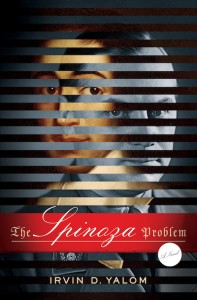 The Spinoza Problem: A Novel: by Irvin D. Yalom– Irvin Yalom is a prominent psychiatrist who is now Professor Emeritus at Stanford Medical School He is a well published author who is known for his outstanding books on group therapy. He also has written books about case histories and relationships, which have been very well received by the public including Love’s Executioner and Staring At the Sun, which addresses death and dying. In addition he has authored a few novels including When Nietzsche Wept and this latest book published in February 2012, The Spinoza Problem.
The Spinoza Problem: A Novel: by Irvin D. Yalom– Irvin Yalom is a prominent psychiatrist who is now Professor Emeritus at Stanford Medical School He is a well published author who is known for his outstanding books on group therapy. He also has written books about case histories and relationships, which have been very well received by the public including Love’s Executioner and Staring At the Sun, which addresses death and dying. In addition he has authored a few novels including When Nietzsche Wept and this latest book published in February 2012, The Spinoza Problem.
This very readable novel will be particularly engrossing to those who have some acquaintance with the philosophy of Spinoza or have chosen to put aside any literal understanding of the bible and question the traditional belief in God. It also will have great appeal to readers who are always drawn to trying to get further insight into how anti-Semitism and Hitler were able to flourish in post World War I Germany leading to the rise of Nazism and World War II.
Yalom acknowledges that he always had been fascinated with Spinoza but could never find a way to write about him since very little was known about his personal and inner life. In the foreword of this book he describes a circumstance, which stimulated an idea, which then allowed him to imagine this novel.
The story starts off by introducing the reader to Baruch Spinoza (nicknamed Benito), a brilliant Talmudic student in Holland and Alfred Rosenberg a student in Germany who runs for President of his College class by making an anti-Semitic speech which gets him called on the carpet by two of the faculty, one of whom is Jewish. Each chapter alternates by following the lives of one of these two young men. Spinoza who lived in the 17th century in Holland becomes ex-communicated by his well-known Rabbi because of his heretic views of the bible and his refusal to accept a belief in God, rejecting both ideas as superstitions. Rosenberg lives in the 20th century and experiences the aftermath of Germany’s humiliating defeat in World War I, becomes a writer and an editor, meets a young Adolph Hitler whom he idolizes and ultimately serves. Although they lived nearly 300 years apart, their connection through Spinoza’s writings resulted in nagging questions which Rosenberg pondered most of his life. These may have unconsciously challenged his deeply held anti-Semitic beliefs. On another level the examination of Spinoza’s deconstruction of a religion based philosophy founded on myths and superstitions highlights the flaws of the deeply held views of Hitler and so many of his followers.
Yalom offers this book as completely factual except for the personal life and inner thoughts of each of the protagonists and the connection that he imagines between the two. There are however some reasons that Yalom has for believing that Rosenberg could have been bothered by the problem that some earlier great German minds valued the writings of “Spinoza the Jew.” The real lives of both men are well known. This includes the details of the ex-communication of Spinoza from his Jewish community and the actual writings of Spinoza. Rosenberg’s life and ultimate death by hanging as a war criminal have been well documented and his views were widely disseminated, as he was an editor of a prominent Nazi newspaper as well as holding other important positions under Hitler.
There are records that show that Rosenberg did spend some time hospitalized in a Psychiatric Clinic during his Nazi years. Yalom creates therapy sessions between Rosenberg and a made up German psychiatrist who is not sympathetic to his vision. Yalom obviously does this, as he imagined the method in which he would approach Rosenberg if he were his psychiatrist.
Another made up character is Franco who is depicted as a friend and follower of Spinoza, who believes that Judaism should be changed from the inside rather than completely discarded in place of a new philosophical view of God as Nature, which was Spinoza’s view. This character becomes a Rabbi and plans to leave Europe and come to the New World and found a new religion. In the epilog of the book Yalom suggests that he was making a reference to Mordecai Kaplan a 20th century pioneer of modernized and secularized Judaism known as the Reconstruction movement in the U.S. (although Kaplan’s trajectory was somewhat different than the character in the book).
Also in the epilog of the book Yalom quotes the wisdom that, History is fiction that happens. Fiction is history that might have happened.
This novel successfully weaves the two together in a stimulating, thought provoking and quite enjoyable novel.
Loving Frank by Nancy Horan
September 4th, 2009 — 05:38 am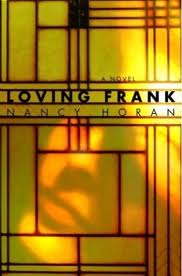 Loving Frank
Loving Frank by Nancy Horan
This is an historical novel based on the love affair of famed American architect Frank Lloyd Wright and a married woman Mamah Cheney. They met when Wright was asked by the young Cheney couple to design a home for them in Oak Park, Illinois, a suburb of Chicago in 1903.
The author appears to have impressively researched the material on the subjects of the novel as described in the afterword and in interviews with her. Whether she has accurately captured their inner thoughts ,conflicts and all the circumstances of their relationship is not as important to me as is the discussion that she is stimulating about marriage, love, loyalty to children, the effect of divorce on children, feminism and the relationship between men and women. This is quite an accomplishment for a first novel.
Mamah Cheney, college educated with a masters degree, writer, fluent in several languages, mother of two small kids, realizes she shouldn’t have married Edwin who is a nice enough devoted hardworking husband. She is now smitten with Frank Lloyd Wright, self centered, creative, brilliant architect who designs buildings to blend with nature. He also has small children and is married to Catherine whom he feels doesn’t understand his special qualities . Mamah and Frank who appear to deeply appreciate one another, fall in love and go off together. Although it is difficult for her, Mamah is able to leave her children to her husband who cares for them with the help of a live- in single sister and a housekeeper. She and Frank live in Europe for awhile and eventually settle in Wisconsin where Frank designs their new residence called Taliesin (from the Welsh word meaning “shining brow” as it is built into the brow of the hillside instead of on top of the hill). Wright is of course is known for his “organic architecture” Ultimately Mamah has some visits with her children but has essentially abandoned them for most of their early childhood. Frank visits his children periodically in Chicago but is basically out of his house living with Mamah in Wisconsin.
The story unfolds mostly through Mamah’s eyes and thoughts. The reader is not only swept up in the story but is given ample opportunity to identify with Mamah and the excitement of her life .She has clearly made a mistake in her decision to originally marry Edwin. She now sees the opportunity to rectify her big false step by living out a life in love with rich fulfillment in so many ways with Frank. The author’s empathy for her is quite palpable in the book as well as in the epigraph she chose for her novel from Goethe, “One lives but once in the world.” At the same time the main character in the book wonders about the decisions that she and Frank have made as well as the implications for their spouses and children. . Many of her own ideas are honed and clarified as she meets Ellen Key,
Swedish feminist and agrees to translate her writings for an American readers. While Mamah strongly agrees with just about everything Key asserts , she did have some qualms with her statement: “The very legitimate right of a free love can never be acceptable if it is enjoyed at the expense of maternal love.”
In the novel and apparently in real life this affair was considered a front page scandal in the Chicago newspapers which of course greatly impacted on the participants. The criteria for a public airing of such an affair may have changed in the past one hundred years. It now appears to have to be a popular movie or television star or a major politician but there is no shortage of such front page stories. As I write this piece today the TIME magazine cover story “Unfaithfully Yours” is examining The marriage of Mark Sanford governor of South Carolina and his wife Jenny, former senator and former presidential hopeful John Edwards and his wife Elizabeth, former governor of NY Eliot Spitzer and his wife Silda and reality TV parents of eight kids Kate and Jon Gosselin. The men in each of these high profile marriages chose to have extra-marital affairs with lesser known women.
The writer of the TIME piece Caitlin Flanagan concludes that there is no other single force causing as much measurable hardship and human misery in this country as the collapse of marriage. She concludes that it hurts children, it reduces mothers’ financial security and it has landed with particular devastation on those who can bear it the least, the nation’s underclass. While the characters in the novel or the high profile people mentioned above don’t fit into this socioeconomic class, few would argue that the impact of divorce probably is magnified as you move down this ladder.
While empathizing with any women’s legitimate wish to be happy and live a fulfilled life as she sees fit, let us keep our eye on the impact on the children. The book keeps returning to Mamah’s feelings and obligation to the children. This was a time before shared custodies, single mothers were becoming more common place , let alone same sex parents. Our modern day recent TIME article quotes a 1994 book Growing up With A Single Parent by Sara McLanahan who studied effects of divorce on children from middle and upper income households. . She concluded that “children who grow up in a household with only one biological parent are worse off on average than children who grow up in a household with both of their biological parents regardless of the parents’ race or educational background.”
Before I recently relocated to California I lived and practiced in Westchester county in New York. One of my colleagues was the outstanding child psychiatrist and psychoanalyst Paulina Kernberg who wrote extensively on children and divorce. She believed divorce, was the second worst trauma a child could undergo, exceeded only by the death of a parent. The psychological scars, she warned, lingered, and in many cases a child was better served living in a loveless or contentious marriage than shuttling between separate households. Perhaps one of the most important recent books giving insight into the impact of divorce on children was The Unexpected Legacy of Divorce written by a renowned San Francisco psychologist Dr. Judith Wallerstein with Julia Lewis and Sandra Blakeslee This was a 25 year study of a group of 131 children whose parents were all going through a divorce. She pointed out among other things that over time these now grown children who usually do not a have a model for a successful relationship have to figure out how to find loving partners and to become good protective parents. She also highlighted how the effect of divorce on a child may not appear until this child is in their late 20’s to early 40s. At this time they can have great fears of loss, conflict and betrayal as they choose their own partners. This may lead to self destructive choices in partners. In other cases of course they can learn from their parent’s mistakes and end up with good marriages. However, I don’t know of any research that has been able to systematically study the effect on children growing up with parents who are unhappily married and resent their own decision to stay together for the children
In the course of my psychiatry practice I have seen many women and men over the years who were contemplating separation, divorce or had been through this process. While it is helpful to be familiar with the above and other and writings, I have found that there are so many variables that it serves no value to generalize in regard to any individual in this situation. Each person brings their own history, background, values and emotional template and we must try our best to help them within this context.
One of the advantages to a person who chooses to get help at this cross road in their life is that we can determine if they have a specific psychiatric condition which if treated will make it much easier for them to negotiate this life crisis and make decisions. For example if a person has an untreated mood disorder such as a major depression or a bipolar disorder there could be intense mood changes which are clouding or influencing their decision making processes. Much more complicated but quite relevant could be certain types of personality disorders or patterns which invariably lead an individual to make repetitive unsuccessful or even destructive choices in their lives. Ideally such a person will be able to enter into therapy for a reasonable amount to time before making important decisions which may be hard to reverse. As in most therapy situations, a good therapist will remain neutral, not let their own personal values unduly influence the patient while allowing an examination of the life crisis . One challenging situation which often requires an exception to this completely neutral stance is when the patient ( most likely a women ) is the victim of clear repetitive abuse by her partner and requires positive affirmative encouragement and support by the therapist. to step away from it.
In conclusion I believe “Loving Frank” is an excellent book. It not only tells the story of two very interesting people which ends with the tragic death of one of them, but it stimulates reflection on a whole myriad of personal issues which were as relevant 100 years ago as they are today.


